Podcast: Play in new window | Download
Subscribe: Google Podcasts | Spotify | RSS
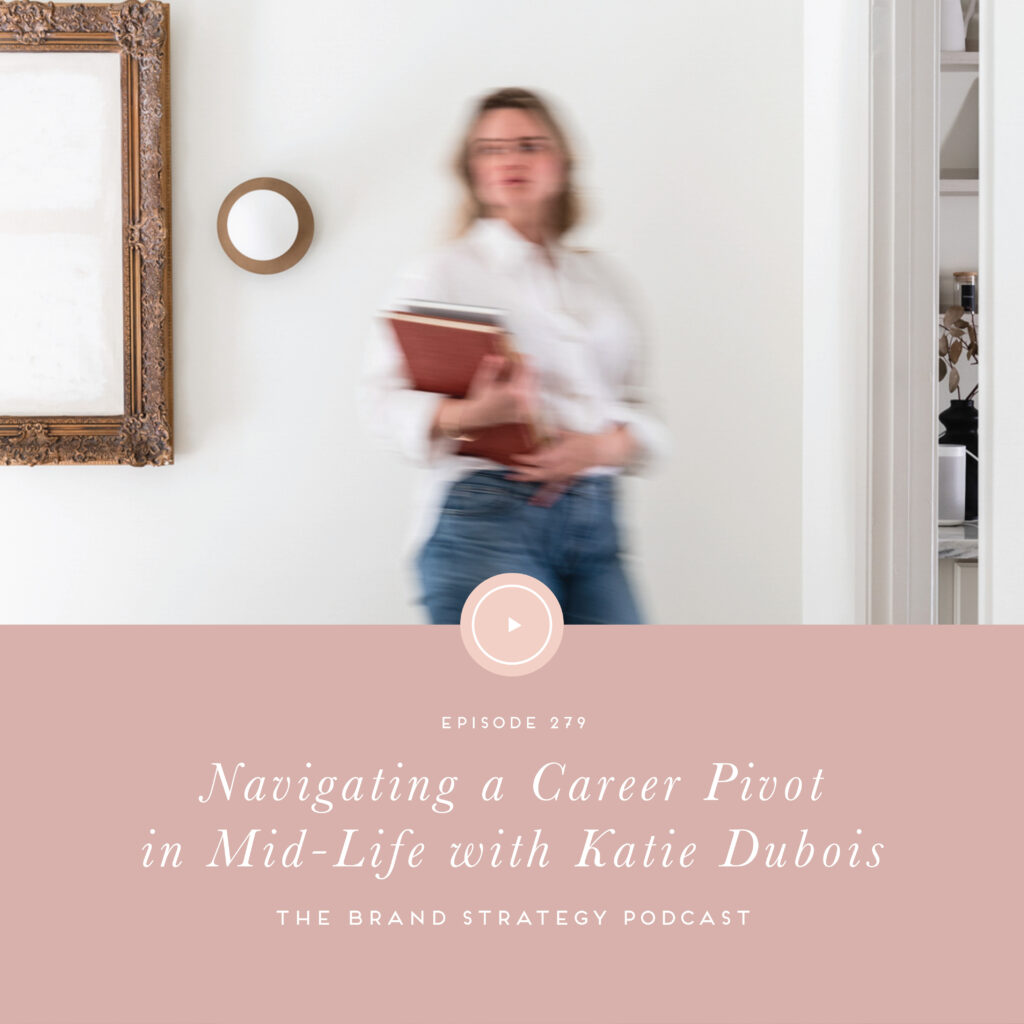
Pivoting Your Career in Mid-Life with Katie Dubois
In today’s episode of the podcast, I’m chatting about navigating a midlife career pivot with purpose and passion with guest Katie Dubois. From graphic design generalist to presentation design specialist, Katie shares her inspiring journey and valuable insights on embracing change after 30+ years in the design industry. In this open, fun conversation, Katie shares how it’s never too late to chase after your passions, and her biggest lessons from executing a thoughtful career pivot in mid-life.
Tune in for the full episode above!
Takeaways + Thoughtful Lessons from a Mid-Life Career Pivot
- Katie’s curiosity, adaptability, and desire for continuous learning.
- Importance of being intentional and purposeful in career transitions.
- Katie’s exploration of UX/UI design and the realization of market saturation.
- Her advice: Prepare a runway for the transition, be purposeful, and avoid oversaturated fields.
- The power of embracing change, plugging into a likeminded community, and community over competition!
Connect with Katie
YOU MIGHT ALSO LIKE…
5 ways to pivot your brand to reflect growth
How to pivot your brand with intention with Lauren Fronteria
FOLLOW ALONG
LIKE THE SHOW?
IN ORDER TO PROVIDE CONTENT YOU LOVE I WANT TO HEAR FROM YOU! SUBSCRIBE TO THE BRAND STRATEGY PODCAST AND LEAVE A 5-STAR REVIEW HERE. THE MORE REVIEWS, THE MORE I’M ABLE TO PROVIDE THIS FREE-ACTIONABLE CONTENT!
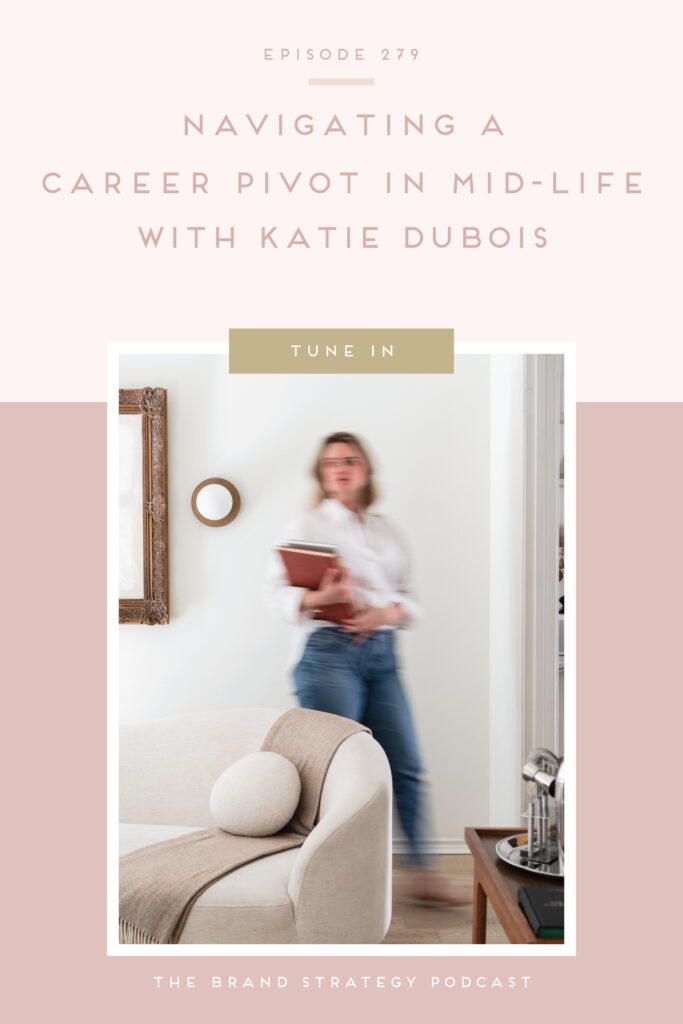
REVIEW THE TRANSCRIPT:
Please note this transcript has been auto generated and may contain typos.
Bonnie (00:07):
Hi, friend, and welcome to the Brand Strategy Podcast, a show created to equip you with the inspiration, encouragement, and clarity you need to build a brand of your dreams. I’m your host, Bonnie Bakhtiari, brand designer, strategist, and founder of the Illume Retreat. From sustainable Strategy to heartfelt encouragement. Each episode is designed to equip you with the tools you need to chase after your dreams, because you deserve a brand that empowers you to do what you love, connects with your dream clients, and offers a deep sense of fulfillment along the way. So grab a cup of coffee and join me on this journey, won’t you?
Bonnie (00:46):
Friends? Welcome back to the Brand Strategy podcast, where today we are talking about navigating a career pivot in midlife with the incredible Katie Dubois. I’m really excited to get to have this conversation with Katie because I think that change is something that impacts every single one of us as humans, and especially as designers, as service-based businesses, as creatives and online entrepreneurs, there are so many changes that we will experience, and there are so much power in knowing that we always have the freedom to make changes that serve us and that align with how we define success. Now, Katie has spent the last three decades of her career as a graphic design generalist, and actually over the time had kind of come to learn that the best way to serve her clients is actually to niche down and specialize in a very specific type of design, which is presentation design.
Bonnie (01:40):
Now, she’s made this career pivot and kind of jokes that she’d been waiting for her real life to begin even after, you know, those three decades, 30 years in the industry. And so she’s here with us today to share her story so that other women of a certain age who are wishing for something more in their careers before they eventually retire can see what it’s like to actually do a career pivot in middle age, because it is never too late to change your destiny. Katie, thank you so much for joining me today. I am really excited to get to chat with you.
Katie (02:14):
I’m really excited to be here. Thank you so much, Bonnie, for having me on your show.
Bonnie (02:18):
Absolutely. It is just truly my joy. Now, um, obviously you and I as we’ve been kind of, you know, trading emails and chatting about this conversation, I’ve had the pleasure of learning a little bit about this journey that you’ve been on recently and how you have decided to make this pivot with your career and niche down as a designer. But in your own words, I’d love to hear a little bit more about you and your business and sort of this exciting season of life that you’re
Katie (02:48):
. Of course. So, I’ll take it back with a little bit of background history. I majored in graphic design in college in the late eighties, and I was just beginning my career at the start of the whole digital evolution of graphic design, right? So I started out as a traditionalist print designer. Just as computers were jumping onto the scene with desktop publishing and design software was first being introduced. And in college there was, in my years of college, there was no part of my graphic design curriculum that included learning any computer courses for graphic design. So there were some computer labs and there were just a few Macs available to us, but we pretty much only used them to type papers and there was no internet yet, which baffles my mind, still . Um, so while my career started with the old school tools for design, it evolved quickly in the first few years right after I graduate, just has it happened.
Katie (03:49):
And this was in the early nineties to what we know as the modern digital age. And maybe it’s a factor of that quick evolution of, of design and the computers coming into being, or maybe it’s just who I am, but I am a very adaptable person and I, I call myself a curious learner. Hmm. So a college taught me the old school way of graphic design with all the history of art and print and design and every aspect of designing on the computer. I since taught myself, didn’t learn any of it in college, learned it all since then. So as, but as far as my business, I’ve always had an entrepreneurial spirit as long as I can remember , I got my first Mac in 1992. I remember it was a, um, uh, Mac lc two, and I set up my very first DBA did the whole thing.
Katie (04:47):
And with that entrepreneurial spirit, I was always focused on using my skills and my energy and the spare time that I had outside my job at the time to, uh, monetize those things, monetize my skills in a way that would benefit me and my family. And I really enjoyed that. I really, I really enjoyed having those little side projects that I could do. Usually they were from a hobby or a little passion project, and they kind of evolved into a, you know, a, a paying little gig. So over the years, my career has ebbed and flowed, and it sometimes was my business was my only my main gig. And then there were times where I had a full-time job. Sometimes some of those main gigs would kind of turn into a, you know, be get hired and I get had a full-time salary job, and then my, my business became my side gig. I still would be doing it, but just on the side. But more recently, fast forwarding to now and the past couple years, I realized it’s been something I wanted to do exclusively. I wanna design as a freelance business as opposed to as, as an employee. So that’s been my focus the past few years. I’m waiting for my real life to begin
Bonnie (06:00):
. That’s so amazing. And I think that, you know, it’s inspiring to hear that, that that desire to be a curious learner has been so present at all these different stages of your life. And you’ve woven that into whatever you’ve been doing professionally, whether it was, you know, growing your own business or working for, uh, you know, a full-time employer as an employee. And I’m, I’m kind of wondering, you know, today we’re talking about navigating a career pivot. So at what point did you realize that it was time to pivot away from your existing career path and it was time to really focus on your business full time?
Katie (06:43):
Yeah. So after 34 years, you know, there, you get to a certain level of burnout or you can, it’s common. Mm-Hmm mm-hmm . And it becomes a struggle to do some of the same projects on repeat, maybe not get a chance to grow and develop in your role or your roles over time. And as I said, I’m an adaptable person. I’m a curious learner, and I made that realization that graphic design as a general field has become a really crowded market. Graphic designers, it seems like they’re a dime a dozen. And so as a result, the value has diminished. The salaries just aren’t, you know, what I would expect, you know, as far as my personal growth. So it made most most sense for me to move away from being that generalist and a niche into a specialty, but stay within my field since I have this background and these skills that I have basically cultivated over 34 years.
Katie (07:44):
And there was this pivotal moment, , I’m a big podcast listener, and I have several entrepreneurial ones that I like to follow for inspiration and ideas, and sometimes an escape from my own burnout and living vicariously through some of these successful hustlers who have found a ma a way to make it work. And I remember the moment when I was listening to this masterclass in my car, the instruction, the instructor was a presentation designer and course creator named Adrian Johnston. And her recording just really resonated with me. I knew immediately that presentation design was the direction I wanted to pursue as far as knitting down from my generalist, you know, uh, habits, lifestyle, . And so, I mean, in presentation design, checked all the boxes for what I was looking for. I could utilize the design skills and background I already have, but I could niche into a specialty that happens to also be a, a really underserved market, right?
Katie (08:41):
Mm-Hmm, . So I took her course and I haven’t looked back, and I quickly owned the fact that I, like so many other graphic designers, uh, we wear that badge of, oh, no, not PowerPoint. Oh, . And the first step, you know, is, is, uh, self-awareness, as they say . So, uh, but that determination and and and purpose can make you see things that through a different lens and decide to try something that might, that just might not really be as awful as you, as you think . So I sat down, I took that course, dove headlong into PowerPoint, and it didn’t take long to, to actually discover that PowerPoint’s a really worthy design tool, and it has a, a lot more power in depth than I ever gave it credit for. So I totally owned that. I was wrong all these years about that, and that was a pivot moment, pretty much .
Bonnie (09:39):
That’s so fascinating to me because I’m, as I’m listening to you share that I’m hearing all these points where, you know, you were, you were curious, you were humble, you were willing to change your mind about something that, you know, you pretty much made up your mind about PowerPoint and, and you were willing to, to be curious and dive into it and explore and then say, Hmm, actually there’s some value here, and, you know, I’m changing my mind about this. And I just, I really admire those qualities that you’re, you’re sharing because I think that those are such powerful skills that can benefit us as, as people, not just as business owners, not just as freelancers or creatives, but as humans. And I imagine that, um, and of course, correct me if I’m wrong here, but do you feel like it required some confidence and some courage on your part to kind of take those steps and get into presentation design and say, what I’ve been doing isn’t working for me anymore, and I wanna try this new thing?
Katie (10:42):
Oh, for sure. Definitely a hundred percent. And I, I tend to be naturally a person who I embrace change and I get excited about it. I’m not afraid of it. I mean, I know some, um, you know, some people are, are, are more averse to change and, and new things, but I’ve always been one that embraces it. I take things that are, I get new things that are put in front of me, and I don’t hesitate to figure them out. And, uh, it’s, you know, even things like the, with ai, like I, some graphic designers shy away from that and all these new tech tools that are available, and I see things like that. And I imagine the possibilities. How can I use these tools to make my, my workflow better or to do more with less? And so I, I find ways to leverage these things and my natural curiosity and desire to grow and experience new things, new things aren’t scary to me, , and I take them and figure out how to make them work for me.
Bonnie (11:49):
Hmm. That is such a fantastic lesson, I think for all of us, is, you know, when you’re facing some kind of change or an opportunity or a new tool, you can choose to be a little nervous, a little intimidated, and sometimes, you know, that’s for good reason. But what would it feel like to be curious, to experiment, to be a little bit playful about it in some instances and get into it and see maybe how life could benefit from these new tools or these new opportunities. Now, Katie, I know that this is a, you know, a big shift that you have been pursuing and you know, you, you have over, I think you said 34 years of experience as a graphic design generalist. So now pivoting into niching down as a presentation designer, um, were there any any kind of fears or concerns or doubts that you had about making that career pivot in midlife? Or was it more a kind of a process of, you know what, I’m, I’m done with the old way, it’s just not working for me anymore and I’m, I’m ready for something new
Katie (13:01):
? Um, I would say that definitely as I, you know, I was acknowledging my burnout. I, and, and starting to consider how can I, how can I manage this? I’m not done yet. Like I said, I’m waiting for my real life to begin still , and I have a lot of years left. Um, and I’m not ready to be done. So I, I, in my doing my research, I have to say I fell down the rabbit hole of looking at UX UI as an opportunity, as a possibility. ’cause it was super popular. I was hearing more and more about it as a, uh, transitioning graphic designer field. It seemed like, you know, a lot of people, a lot of graphic designers, even colleagues I know, um, had made that transition. Mm-hmm. . So, but I, I, I did, I spent time doing research and, uh, bought books on it, took a few, like, little courses on, on things.
Katie (14:00):
And, um, I realized that I was maybe a little late to the game on it. And before I could even really get going with it, with learning more and implementing it and making some actual legit connections, it had become incredibly saturated. And, um, I came to the realization that by the time I would be up to speed, the window of opportunity would be closed for me as far as that being a lateral move. And I would probably have to step down multiple levels. And I don’t, I wasn’t interested in doing that at this stage of my career. I wanna, I’m wanna grow from here because I’m at a certain age, , and I wanna go from where I am and not, you know, leap down and extend the window in front of me. I want to, you know, go into a great opportunity for myself and my family rather than step back and kind of feel like I’m starting over .
Bonnie (14:59):
That makes so much sense. Um, when you were kind of weighing that decision and you were exploring those different options of different niches within the design industry that you could dive into, um, were there any takeaways, any kind of lessons or, or encouragement that you would share to someone who finds themself in a similar position? They’re thinking about pivoting their career and they’re moving away from something that, that feels established to something that feels like it’s, you know, full of that scary slash exciting possibility?
Katie (15:35):
Definitely. Actually, it’s funny that you ask that because there’s a term that, that, uh, my husband and I use often at this point in our careers, both of us, and we talk about this runway we use, we use the word the term runway, and, um, it’s basically the, this is the, the, the path we’re paving to get ready to launch and to do whatever the next thing is. So we are not making a transition from like black to white, like instantaneous. It’s a transition. It’s a gradual transition. So we call it the runway. So it’s like you got this lead on, you know, process where you’re preparing, you’re learning, you’re, you know, researching, you’re getting ready, you’re getting ready, and then you can launch. And, uh, so I, I, I say that a lot and it’s like, it would be advice that I would give is, is prepare a runway for the transition. And with and experience, we learn to be more purposeful and less impulsive with big life changes, right? Mm-Hmm, . So you think about how you can leverage your existing skills, saving, you know, that which would save time in your runway and avoid a career choice that isn’t oversaturated. Don’t just follow the herd and know what you can develop quickly with the tools that you already have to make a transition that will work for you, and don’t feel that you need to do it all at once.
Bonnie (17:04):
Those are fantastic pieces of advice, and I especially love that kind of analogy that you and your husband use of the runway where we, you know, it’s, it’s not like you’re just taking off and going from zero to a hundred overnight. It’s this process and there’s a buildup to it. And I think that that in some ways kind of takes the pressure off a bit, right? It’s not like you’re putting all this pressure on yourself to figure this out and to figure it out. Right Now, you know that it’s a series of steps and you know that it’s a process, and little by little you’re making progress towards that big picture goal, right?
Katie (17:40):
Absolutely. Yes.
Bonnie (17:42):
So, on the flip side, are there any kind of mistakes or missteps that you might have experienced in this process that you would like to kind of share, kind of give people a heads up of, Hey, if you’re considering this big career pivot in midlife, you know, be aware of these things. Maybe don’t , maybe don’t do this. ?
Katie (18:02):
Yes, probably I would go back to that where I fell into the rabbit hole of thinking. I would, um, you know, follow the herd and go to the ux UI field. Not that there’s anything wrong with the ux UI field, but it wasn’t going to work out for me. I just had so much to learn, and it would’ve been a very long runway and, uh, even by, you know, even by the point, by the time when I would be at a point ready to launch, I would be taking steps down. I would be, uh, at a junior level. And I’ve, one thing I’ve discovered about that field since it’s so very popular and it’s new, there is no degree in it, or maybe they’re starting to create degrees right now for it. But a couple years ago when I was, uh, following, you know, pursuing, I shouldn’t say following, but pursuing that path, um, there, everything was brand new about it.
Katie (18:57):
So that roles at jobs, which were plentiful, definitely had a very structured, uh, way about them. There was junior, there was junior one, junior two, and then there was, you know, uh, you know, intermediate levels of the job. And then there was adv, you know, um, senior levels and, um, management and director. And it’s like, there’s so many levels. And, uh, I didn’t experience anything of that in my, in my, um, generalist graphic design years. It was, you know, your, your work speaks for itself and you just, you know, whatever. But this UX UI thing, super structured, and I just knew it wasn’t gonna be for me. So I spent probably time, I, I could have been pursuing other things, , falling down a rabbit hole of something that just wasn’t gonna end up working for me. .
Bonnie (19:48):
Mm. Yeah, I get that. Um, you know, I, I think, of course, hindsight’s 2020, it’s, it’s, you know, so easy for us to look back on these experiences and say, oh, I can so clearly see that that thing that I, you know, was really interested in actually wasn’t the best path for me. But do you think that, um, you know, the, the process of investigating ux ui design and, you know, exploring that only to learn that it wasn’t quite the right fit for you, did that give you any sort of clarity? Did that help kind of influence your idea of more of what you did want to pursue?
Katie (20:27):
Actually, it probably did, because I still learned some things from it. I learned, I, um, a deeper knowledge about actually web design, which I had teach, taught myself many years ago. Um, actually some of the UX UI design stuff that I was starting to learn about pulled me back to the, the early learnings of web design that I was in years ago. And I, I still do, do web design, um, for some clients, and it actually developed my web design skillset a little, a little bit by learning a little bit, a lot, you know, considerably more about UX and UI than I had known before. So it was a helpful, um, step in my runway as, as much as I didn’t go on and pur and continue to pursue that field, it helped me hone some skills that I already have. And, um, helped me realize that there’s all these other niches, you know, sub niches of graphic design that are coming, you know, that are emerging. And I really need to keep my eyes open, uh, and not just, you know, go through with blinders on and the whole, you know, staying in my whole generalist field and acknowledge that there’s new fields emerging all the time, and I need to jump right out there and learn, uh, new software, new skills, because I don’t wanna get left behind.
Bonnie (22:02):
Mm mm-Hmm, , I get that. Um, with that desire to kind of stay on top of things and stay in the know, um, do you, do you do anything to kind of keep yourself motivated when there’s constantly new things to learn, you know, over the course of your career and even now as you are executing this pivot into this, you know, very specialized niche, how do you keep yourself motivated and excited and engaged to learn these new things when there’s always something new to
Katie (22:34):
Learn? That’s a great question. There’s a, a, a community, a few communities that of like-minded presentation designers, or even just entrepreneurs, freelancers in general that I hang out with. We have weekly meetings or monthly meetings. It depends on the group of people, but we, we like to network share ideas. We all acknowledge, and this is refreshing. We all acknowledge that there’s so much work out there available for all of us. We aren’t. Um, and maybe this is an age thing, , we aren’t in competition with each other. ’cause there’s just so much, there’s just so much opportunity out there for everybody that it’s, it’s beneficial for all of us to talk about, Hey, you know, I had this experience, this was a challenge. I had this happen with the client. What would you do? What would you say? How would you handle this? And it’s super helpful and super great to just have a bunch of colleagues that, you know, that you can, uh, chat with and network with. And, and sometimes some of us have, uh, a more specific skill, um, in a certain area that other, that they might not. So we can share work, we can help each other with projects or pass a project on if we are too busy or it’s, it’s great to have that network of colleagues.
Bonnie (23:52):
Mm-Hmm, absolutely. Community can be game changing and having a group of people that you can turn to for advice or encouragement or to share an opportunity with that, that’s priceless. Yes. Now, I always love to ask, with every interview that I have here on the podcast, is there, you know, kind of a final piece of advice or encouragement around what we’ve been talking about today. So when we’re looking at a pivot, when we’re presented with, uh, the opportunity to pivot away from a well established career, are there any final pieces of advice or encouragement or wisdom that you’d like to share for those tuning in today?
Katie (24:34):
Oh, sure. I would say, um, be intentional. Intentional with change as you plan your runway. Don’t be afraid of the technology, the impact of new things. Um, you can really have a strong career and stand out in a crowded marketplace if you are embracing the new opportunities and change in technology.
Bonnie (25:04):
That is a fantastic piece of advice. Thank you so much for sharing that with us. Now, Katie, I’m sure that folks are gonna want to follow along with you as you are, you know, going through this exciting, you know, kind of change. So where can people find you online and, and where can they find your business online?
Katie (25:24):
Awesome. Yes, I have, my website is katiedubois.com and I am on LinkedIn, Instagram, and Facebook at Katie Dubo design. All of my social media links, follow links can be found on my website. I just recently embarked on a rebrand. It seems like that’s the life of a designer, right? , it’s, our website is never good enough. Our logo’s never done or perfect or good enough. We’re always changing it, always in a state of redesigning things, . But, uh, I recently decided over the years I’ve had different, you know, names for my business. I recently decided it makes more sense to just use my name. I mean, what easier way to find me than to just use my name. So .
Bonnie (26:07):
Yeah. I love it. You know, there, it’s, it’s clean, it’s simple. It’s, you’re never gonna get tired of it. , right?
Bonnie (26:15):
I love that. Well, um, for those who are tuning in today, I’m gonna have Katie’s links and all of that information so that you can find her and connect with her, um, in the show notes for today’s episode. So as always, you can go to brandstrategypodcast.com, click on the latest episode link, and everything you’re looking for will be there. Katie, thank you so much for joining me and sharing part of your journey with us and sharing more about this exciting career pivot that you’ve been experiencing. And I, I think I speak for all of us. We’re so excited to see as you, um, really get into this new season where your real life is beginning.
Katie (26:57):
Thank you so much, Bonnie,
Bonnie (27:00):
For those who’ve been tuning in today. As always, thank you again for tuning into the Brand strategy podcast. I’m grateful for you. And as always, I’m cheering y’all on from Waco. Thank you so much for joining me today. Friend, before you go, I would be so grateful to receive your feedback on the Brand strategy podcast. If you enjoyed this episode or the podcast in general has helped you grow your brand, I’d really appreciate it if you left us a review in iTunes. Your positive reviews enable the brand strategy podcast to continue to grow and reach like-minded creatives just like you. Thank you for all your support and encouragement as together we pursue building brands on with purpose and intention. Until next time, I’m cheering you on from Waco.

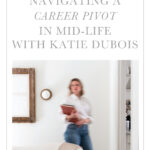

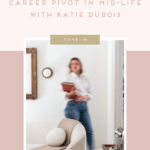
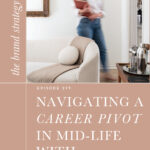
leave a comment